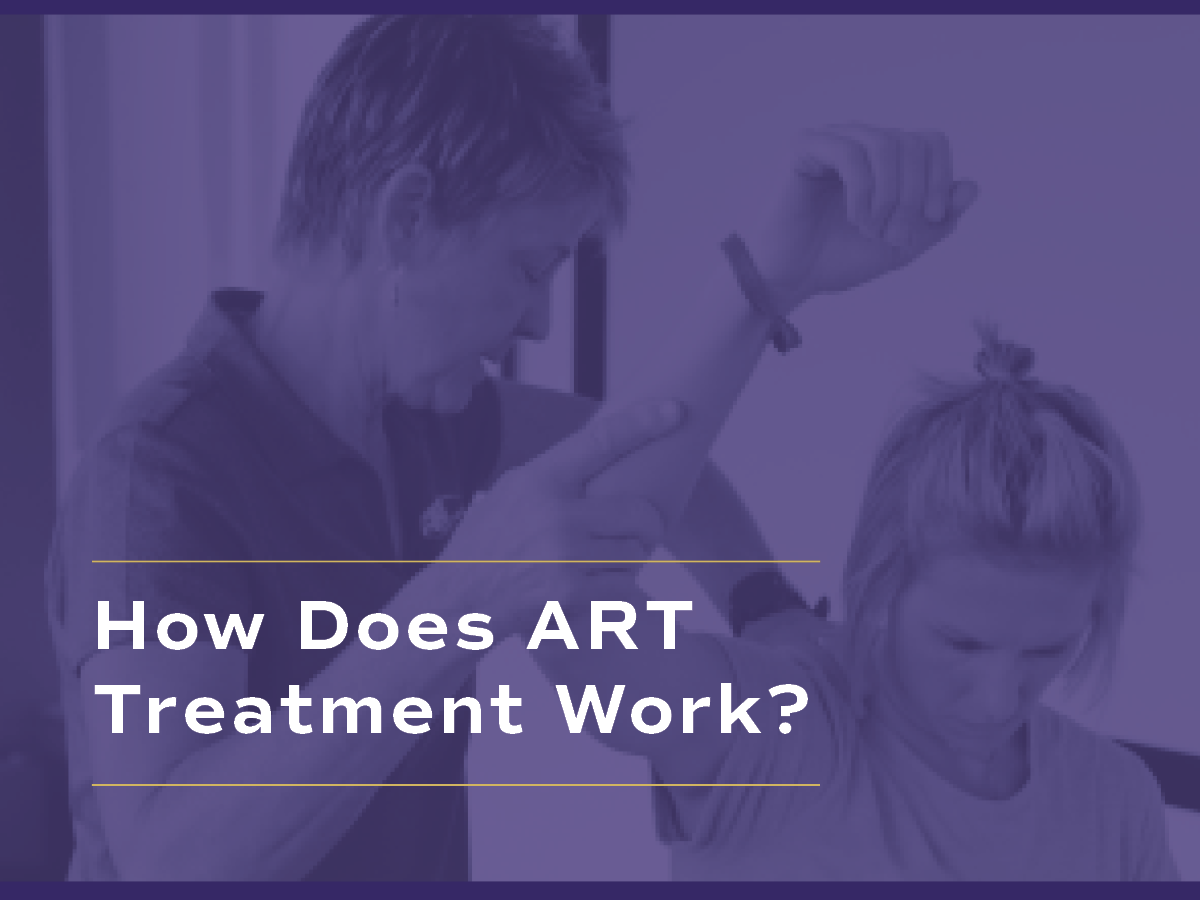Elite Provider™, Dr. Jesse Suess, runs us through the ART Diagnostic Algorithm and explains why it provides a better outcome for patients.
What is ART treatment?
Active Release Techniques® (ART®) treatment is a non-invasive system that treats soft-tissue and nerve dysfunction at the source. This hands-on treatment uses provider touch, pressure, tension, and patient movement to pinpoint and treat the origin of the affected area.
What is the ART Diagnostic Algorithm?
Health care professionals must stay up-to-date with the latest techniques and therapies to provide the best possible care for their patients. ART treatment is a soft-tissue therapy that is gaining popularity for its ability to identify and treat the underlying causes of pain and dysfunction.
A key component of ART treatment is the ART Diagnostic Algorithm, a step-by-step process that helps ART Certified Providers™ identify the specific structures causing soft-tissue conditions.

A patient-friendly explanation of the ART Diagnostic Algorithm to explain the process of ART treatment.
The ART Diagnostic Algorithm begins with all available history and examination tools, like orthopedic and neurologic tests, symptom patterns, Selective Functional Movement Assessment (SFMA), biomechanics, and possible lab, imaging, and other diagnostic tests.
The problem
Shoulder impingement is a common condition that can cause pain and limited mobility in the shoulder joint.
Using the ART Diagnostic Algorithm, an ART Certified Provider can identify the specific structures causing the impingement and develop a personalized treatment plan to address it.
To see the ART Diagnostic Algorithm in action, let’s follow a case that we see walk into our office on a weekly basis.
Meet the patient
Alex* is a 40-year-old construction worker who spends his days hammering and lifting heavy equipment. Alex has noticed a sharp pain in his right shoulder whenever he raises his arm overhead, making it difficult to do his job. After trying to manage the pain with rest and over-the-counter pain medication, he decides to seek out an ART Certified Provider for help.
Let’s run Alex through the ART Diagnostic Algorithm
Step 1: Find the source of pain.
First, the ART Certified Provider will ask the patient to show the position or motion that is causing the problem.
Because Alex has shoulder impingement, raising his arm overhead or reaching behind his back may be “the problem.”
The provider then slowly palpates the shoulder area to find the first occurring problem with tension, texture, motion, relative motion, or symptom.
Alex’s provider may feel tension or resistance in the rotator cuff muscles.
Step 2: Feel for contributing sources.
The provider will begin using level 2 techniques to differentiate the tissue and isolate the structure causing the impingement.
Alex’s provider may identify the rotator cuff muscles are overactive and tight, causing the impingement.
Alternatively, they may find that the shoulder blade is not moving correctly, leading to an impingement in the shoulder joint.
You will notice that I use the word “may” quite often during this section and that’s because not all shoulder impingement is caused by the same dysfunction. The only way to know what is causing the problem is to learn how to feel what’s going on under the skin.
Step 3: Treat the problem.
Once the structure causing the impingement has been identified, the ART Certified Provider can develop a personalized treatment plan to address it.
This will involve ART treatment to release tension in the rotator cuff muscles, as well as stretching and strengthening exercises to improve the movement and stability of the shoulder blade.
In addition to these specific findings, the provider may also consider the patient’s medical history, previous injuries, and lifestyle factors that may be contributing to the condition.
For example, poor posture or repetitive overhead movements may be contributing to the impingement and need to be addressed as part of the treatment plan.
Do you want to provide better care?
The ART Diagnostic Algorithm provides a structured approach to identifying and treating the underlying causes of soft tissue conditions like shoulder impingement.
By taking a personalized approach to treatment, ART Certified Providers can help patients achieve better and faster results than traditional therapies.
ART treatment, and specifically the ART Diagnostic Algorithm, provides a promising approach to identifying and treating soft tissue conditions and nerve dysfunction.
By working closely with ART Certified Providers, you can help patients achieve faster and more effective results, ultimately improving their overall quality of life.
Want to take that next step and become an ART Certified Provider? Learn more here.
*Name changed for anonymity.




